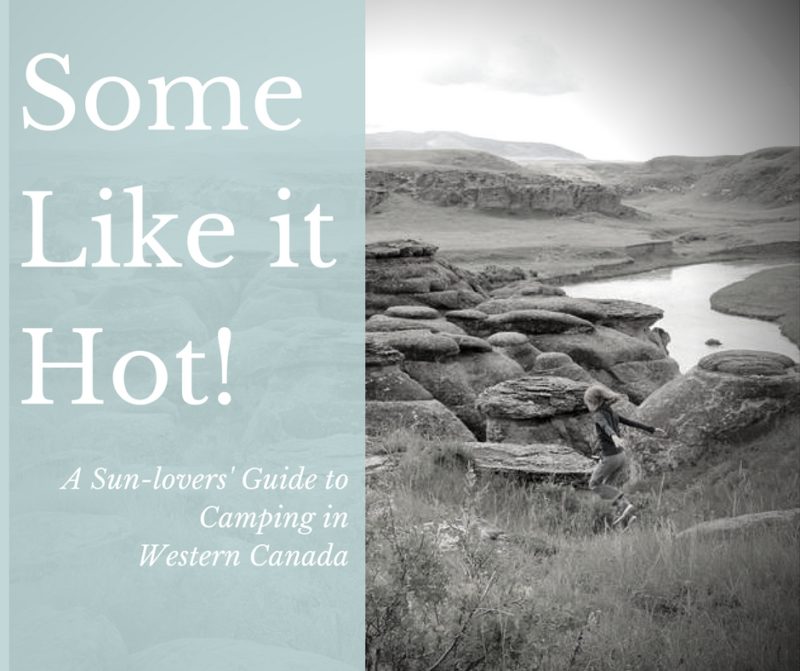Many would call me crazy but my ideal camping trip involves eating breakfast in a tank top, biking sun-baked trails with sweat pouring down my face, and then jumping in the nearest lake to cool off. I don’t want to pack fleece sweaters with me, I don’t want to bundle up in a blanket while I sit in front of the campfire at night, and I certainly don’t want to be wearing mittens or a toque in the middle of summer.
Fortunately, some of the hottest places in Canada can be found in the Southern Interior of British Columbia and in the Southern Prairies of Alberta and Saskatchewan. Within a few hours’ drive of Calgary I can be in my happy place, unleashing my inner sun goddess.
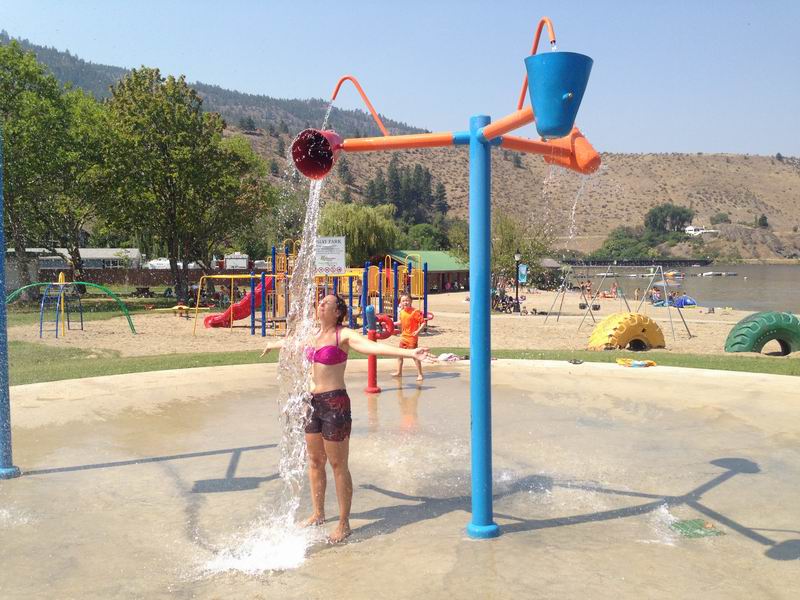
Some like it Hot! Unleash your inner sun goddess in BC’s Okanagan Valley
Canada’s “Desert” – the Okanagan Valley
While not a true desert by scientific definition, sun lovers will find it plenty hot enough in British Columbia’s Okanagan Valley with average summer temperatures resting in the high twenties. Often referred to as the “Okanagan Desert,” this semi-arid area is located in the Southern Interior region of BC and boasts Canada’s lowest annual amount of precipitation (good news for those who hate camping in the rain!)
The community of Osoyoos in the South Okanagan owes its dry climate to the Cascade Mountain shadow that it resides in.
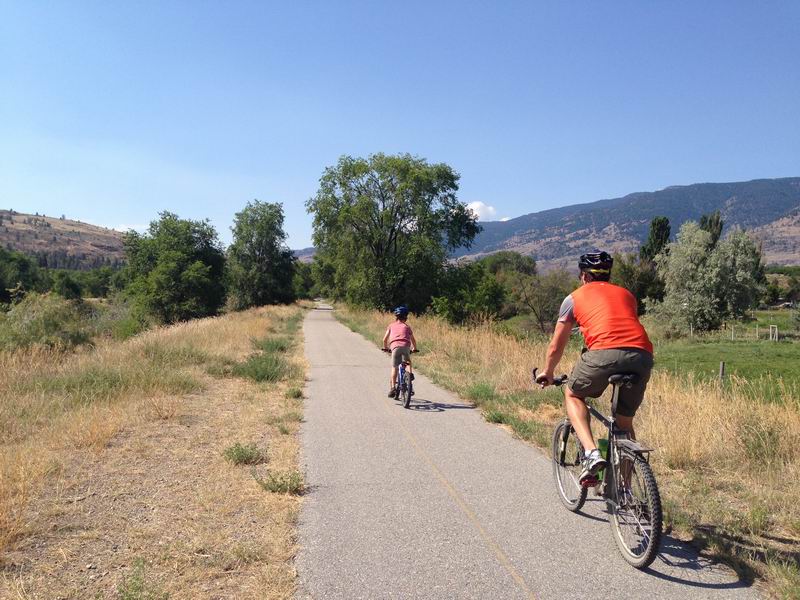
Biking the International Hike and Bike Trail between Oliver and Osoyoos
Reasons to Camp Here:
Osoyoos Lake is Canada’s warmest fresh water lake (a Rocky Mountain polar plunge this isn’t!)
You’ll be camping on the northern tip of the Sonoran Desert (extending from Mexico into Canada.) – And that’s kind of neat, right?
World class wineries, fresh fruit, and local produce (Daily meals are a feast down here!)
100+ kilometres of family-friendly biking on the Kettle Valley Railway converted rail trail between Kelowna and Osoyoos
Visit a spotted lake! This mineral lake near Osoyoos has to be seen to fully comprehend that a lake can be covered in multi-colored polka dot circles
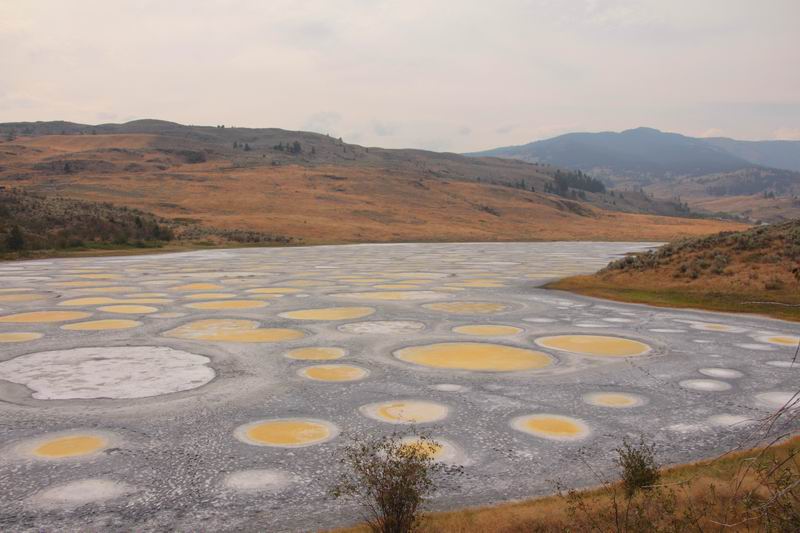
Spotted Lake in Canada’s “Okanagan Desert”
Exploring our Southern Prairies and Badlands
Two small towns in Southern Saskatchewan get to claim the highest temperature officially recorded in Canada at 45 degrees Celsius. (Better have air conditioning in your trailer if your summer camping trip gets that hot!)
While Osoyoos has higher average temperatures, the southern prairies, (Canada’s sunbelt,) are where it’s at for the classic “summer scorcher.”
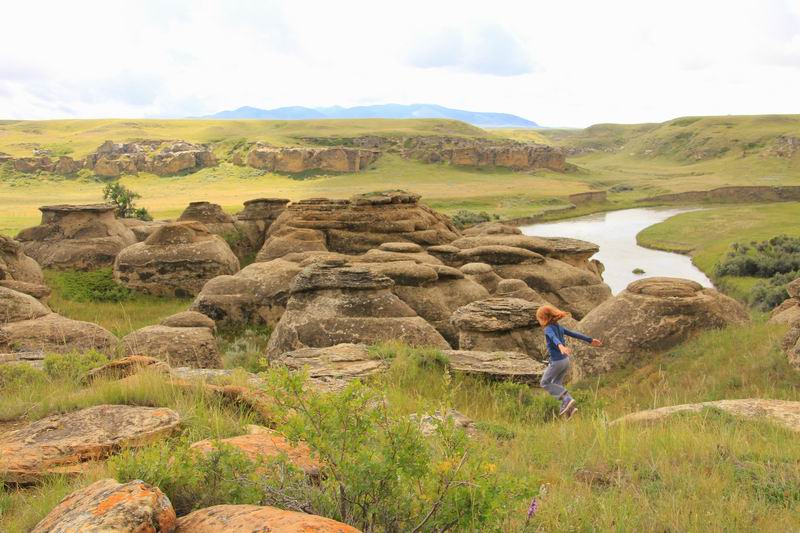
Exploring the Southern Prairies and Badlands of Alberta in Writing on Stone Provincial Park
Where to Camp in the Southern Prairies:
Dinosaur Provincial Park, UNESCO World Heritage Site near Brooks, Alberta. Visit or camp in this park to enjoy hiking through the badlands landscape on one of five self-guided trails, sign up for a guided hike, bus tour, or fossil safari, or spend a day paddling down the Red Deer River. Comfort camping is offered in this park and it’s a great destination for autumn visits as well when the temperatures start to cool off.
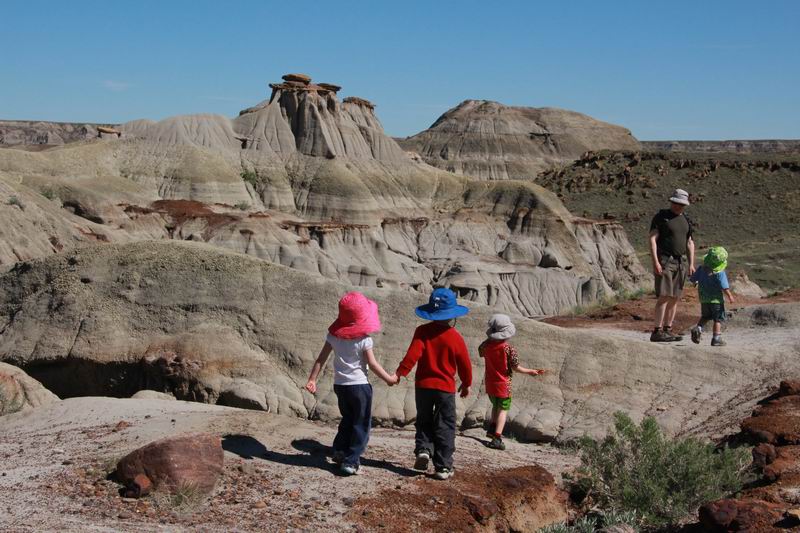
Hiking in the Badlands of Dinosaur Provincial Park
Writing on Stone Provincial Park, National Historic Site set in the prairie grasslands of Southern Alberta, located 90 minutes south of Lethbridge. This park contains the largest amount of First Nation rock carvings and paintings on the great plains of North America. Spend a day hiking through the badlands on the Hoodoo Trail or paddling down the Milk River with sandstone cliffs bordering the river banks. There is also a small sand beach in the popular provincial park campground.

Paddling down the Milk River through Writing on Stone Provincial Park
Cypress Hills Interprovincial Park, Canada’s only interprovincial park, stretching across Southern Alberta and Saskatchewan. The Cypress Hills Plateau rises 200 metres above the prairie below, and from the top of Alberta’s “Head of the Mountain,” you’ll be at the highest point in Canada between the Canadian Rocky Mountains and the Labrador Peninsula. There are provincial park campgrounds on both the Alberta and Saskatchewan side with hiking or biking trails in abundance. Beach lovers can spend their time at Elkwater Lake (Alberta,) or Lock Leven Lake (Sask.)
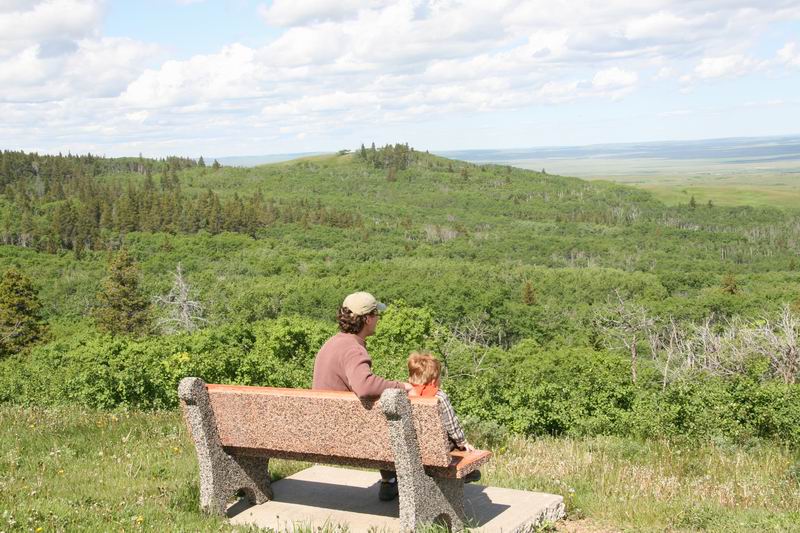
The Cypress Hills Plateau on the Saskatchewan side of the Interprovincial Park

